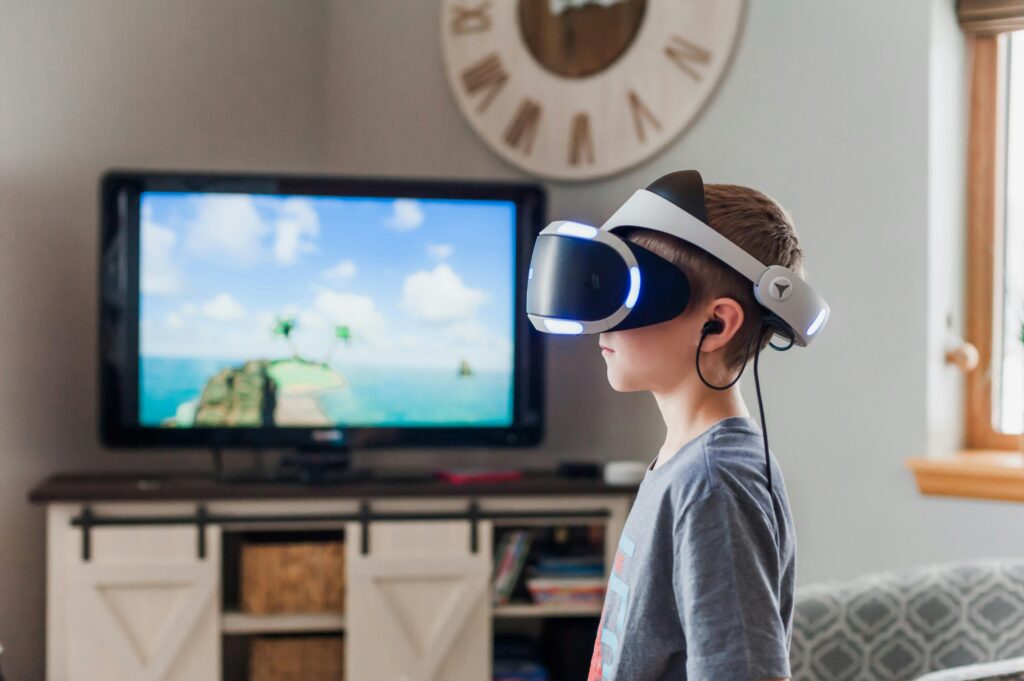
Walk into almost any tech store or look at the latest smartphone features, and you’re bound to hear about Virtual Reality (VR) and Augmented Reality (AR). Both terms often get lumped together, and it’s easy to get them confused. After all, they both involve creating immersive digital experiences, right? Well, yes, but how they achieve that immersion and how they interact with your world are fundamentally different.
If you’ve ever wondered about the buzzwords, or which technology is truly transforming our digital future, you’re in the right place. This guide will clearly explain the key differences between Virtual Reality and Augmented Reality, helping you understand their unique applications and why they each hold such immense potential. Let’s peel back the layers and see how these fascinating technologies work with our reality.
Virtual Reality (VR): Escaping to Another World
Imagine putting on a headset and suddenly being transported to a completely different place. You could be exploring ancient ruins, soaring through outer space, or battling zombies in a fantasy world. Your real surroundings disappear, replaced entirely by a digital environment. This is the essence of Virtual Reality.
How it works: VR creates a fully immersive, simulated environment. When you put on a VR headset (like an Oculus Rift, HTC Vive, or PlayStation VR), the screens inside block out your real-world view. Your head movements are tracked, allowing you to look around and feel truly present within the virtual space. Hand controllers often let you interact with objects and navigate the digital world.
Key Characteristics of VR:
- Total Immersion: The primary goal is to fully immerse the user, cutting them off from their physical surroundings.
- Requires a Headset: A dedicated VR headset is essential to deliver the visual and auditory experience.
- Simulated Environment: Everything you see and hear is computer-generated.
- Examples: VR gaming (e.g., Beat Saber, Half-Life: Alyx), virtual tours of properties, surgical training simulations, virtual meeting spaces.
Think of it as: Stepping into a completely new digital world.
Augmented Reality (AR): Enhancing Your Real World
Now, imagine you’re walking down the street, looking through your phone’s camera, and suddenly you see a giant animated monster battling a robot in the park right in front of you. Or perhaps you’re using an app to see how a new sofa would look in your living room before you buy it. This is Augmented Reality.
How it works: AR overlays digital information (images, videos, 3D models, sounds) onto your real-world view. It doesn’t replace your reality; it augments or enhances it. Most AR experiences today happen through smartphone or tablet cameras, but dedicated AR glasses (like the Microsoft HoloLens or Google Glass) are also emerging. The device uses its camera to capture your surroundings and then projects digital content onto that view.
Key Characteristics of AR:
- Augments Reality: It adds digital content to your real-world environment, allowing you to see both simultaneously.
- Less Immersive (Often): The goal isn’t to disconnect you, but to blend digital with physical.
- Device Versatility: Can be accessed through smartphones/tablets, smart glasses, or even specialized displays.
- Examples: Pokémon Go, IKEA Place (seeing furniture in your home), Snapchat/Instagram filters, navigation apps showing directions overlaid on the street, industrial maintenance overlays.
Think of it as: Adding digital layers onto your existing reality.
The Crucial Differences at a Glance:
| Feature | Virtual Reality (VR) | Augmented Reality (AR) |
| Environment | Completely artificial/simulated digital world | Real-world environment with digital overlays |
| Immersion | Full immersion; blocks out physical world | Blends digital with physical; user remains connected |
| Required Device | Dedicated VR headset (e.g., Oculus Quest, HTC Vive) | Smartphones, tablets, or specialized AR glasses |
| Interaction | User fully within the digital world | User interacts with digital content within their real world |
| Purpose | Escape, simulation, deep immersion | Enhance information, provide context, interactive overlay |
| Perception | Feeling of being somewhere else | Feeling of seeing something new in your current place |
Exporter vers Sheets
Blurring the Lines: Mixed Reality (MR)
To make things a little more interesting, there’s also Mixed Reality (MR). MR often sits somewhere between VR and AR. It involves digital objects that are not just overlaid but can also interact with the real world in real-time. For example, a digital character might appear to walk behind your real-world furniture, or you might manipulate a virtual object using your real hands. Devices like the Microsoft HoloLens are often cited as MR, as they track your environment and allow persistent digital objects to appear anchored in your physical space.
The Future: Complementary Technologies
While VR and AR have distinct purposes and experiences, they are not necessarily competing technologies. In fact, they often complement each other and share underlying technologies like sophisticated sensors, advanced graphics rendering, and real-time tracking.
VR excels when you want to transport someone to a new place or create a completely controlled environment for training or entertainment. AR shines when you want to enhance, inform, or interact with your immediate surroundings without losing touch with reality.
As these technologies continue to mature, they will increasingly weave into our daily lives, transforming how we learn, work, play, and interact with information. Understanding their fundamental differences is the first step to appreciating their unique powers and the exciting future they promise.
